The bobcat (Lynx rufus) is known by lots of names: wildcat, bay lynx, and lynx cat.
Bobcats are found throughout North America from southern Canada to southern Mexico.
The bobcat is the most commonly known wildcat in North America.
Bobcats can be found in a variety of habitats, including forests, semi-deserts, mountains, and brushland.
Bobcats are known to live up to 12 years in the wild, but the average life expectancy is probably closer to 7 years. In captivity, bobcats live 20-25 years, with the oldest living to 32 years.
Bobcats look very similar to Canadian lynx. But bobcats have smaller feet and don’t have the furry soles of the other lynx, so they are not as well equipped to live in areas of heavy snow.
Bobcats range in length from 65 to 105 cm (26 to 41 in), with the tail adding an extra 11 to 19 cm (4 to 7.5 in). They are 45 to 58 cm (18 to 23 in) high at the shoulder and weigh between 4 and 15 kg (9 and 33 lb).
Its coat is variable, though generally tan to grayish brown, with black streaks on the body and dark bars on the forelegs and tail. Its spotted patterning acts as camouflage. The ears are black-tipped and pointed, with short, black tufts.
The face appears wide due to ruffs of extended hair beneath the ears. Bobcat eyes are yellow with black pupils. The nose of the bobcat is pinkish-red, and it has a base color of gray or yellowish- or brownish-red on its face, sides, and back.
The bobcat is muscular, and its hind legs are longer than its front legs, giving it a bobbing gait.
Its name is based on the appearance of its tail, which looks cut or “bobbed.”
Bobcats are crepuscular, meaning that they are most active at dawn and at dusk. It keeps on the move from three hours before sunset until about midnight, and then again from before dawn until three hours after sunrise.
They sleep in hidden dens, often in hollow trees, thickets, or rocky crevices.
Like all cats, bobcats have excellent vision and hearing and a well-developed sense of smell.
Bobcats can run at up to 48 km/h (30 mph) and they put their back feet in the same spots where their front feet stepped to reduce noise when hunting.
Apart from its speed, this feline also uses stealth as a means to take on a wide variety of animals as prey.
Once they are close to their prey, they calculate its exact location, and then leap as long as 3 meters (10 feet) to pounce on top of it to pin it down.
As strict carnivores, these fierce hunters prey on deer, rabbits, birds, mice, squirrels and other smaller animals.
Bobcats are good climbers and can escape up a tree, if needed, but they’d rather spend their time on the ground.
Bobcats can swim if they have to, but it’s not their first choice!
Like most cats, the bobcat is territorial and largely solitary, although with some overlap in home ranges. It uses several methods to mark its territorial boundaries, including claw marks and deposits of urine or feces.
Bobcats communicate through scent, visual signals, and vocalizations.
The vocalizations made by bobcats include meows, growls, snarls, hisses, yowls, caterwauls, squalls and screams.
They make various yowling sounds to communicate with one another during the breeding season.
The mating system of bobcats is similar to that of domestic cats. Males and females are only together for the brief time required for courtship and mating, and both males and females may have more than one mate.
Bobcats usually mate in the early spring, although the timing is variable. After a gestation of 60 to 70 days, a litter of one to six, but usually two to four, kittens are born. The young open their eyes for the first time when they are 10 days old, and they nurse through their second month. Young bobcats strike out on their own during the winter, when they are about 8 months old.
The adult bobcat has few predators other than humans, although it may be killed in interspecific conflict. Cougars and gray wolves can kill adult bobcats, a behavior repeatedly observed in Yellowstone National Park. Kittens may be taken by several predators, including owls, eagles, foxes, coyotes, and bears, as well as other adult male bobcats.
The IUCN lists it as a species of least concern, noting it is relatively widespread and abundant, but information from southern Mexico is poor.
In the United States population densities are much higher in the southeastern region than in the western states.
It is estimated that there are 725,000 to 1,020,000 bobcats in the wild.
In Native American mythology, the bobcat is often twinned with the figure of the coyote in a theme of duality.
The bobcat and coyote are associated with the fog and wind, respectively—two elements representing opposites in Native American folklore.
In a Shawnee tale, the bobcat is outwitted by a rabbit, which gives rise to its spots. After trapping the rabbit in a tree, the bobcat is persuaded to build a fire, only to have the embers scattered on its fur, leaving it singed with dark brown spots.

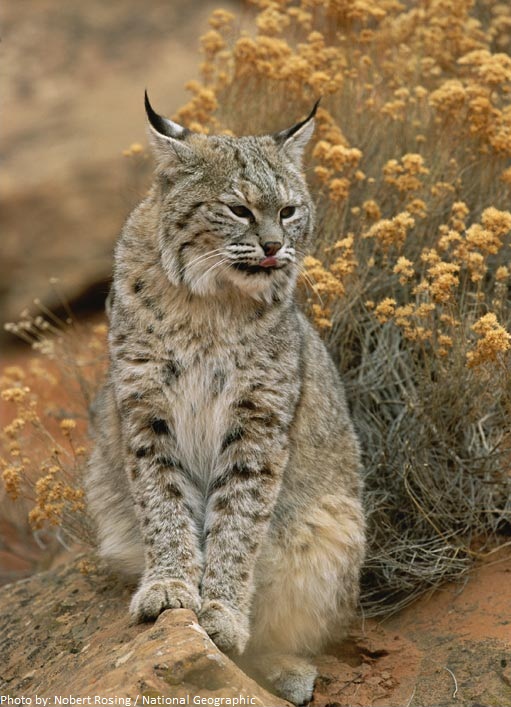
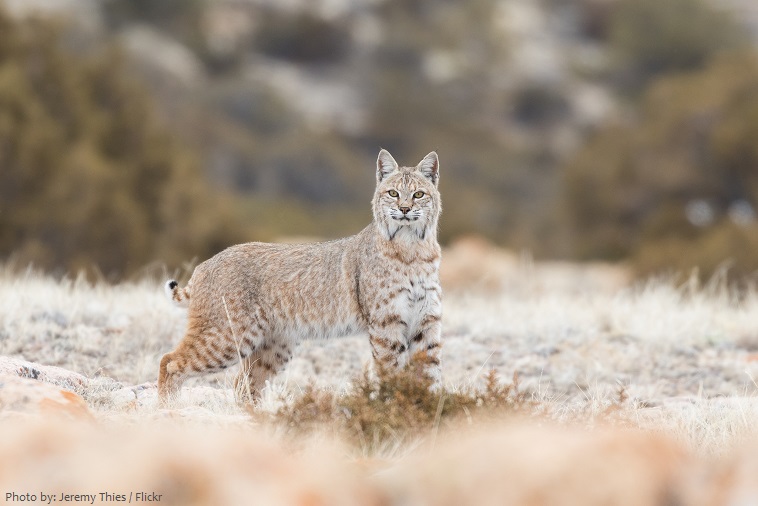
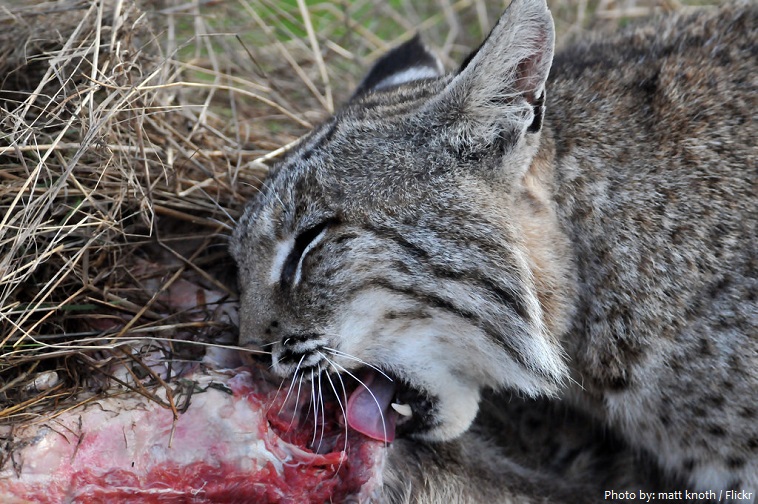
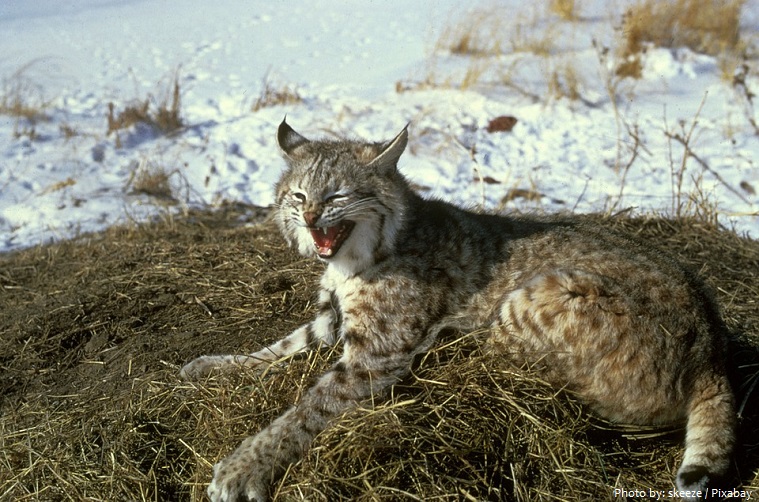
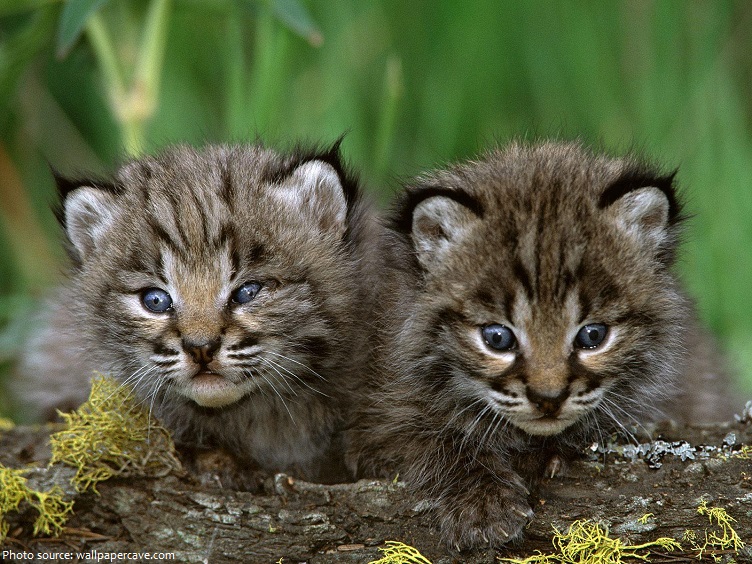
Comments are closed.